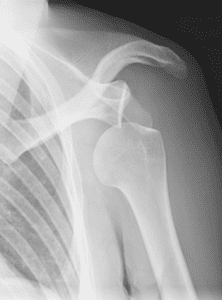Bio
What article, editorial, or report have you lately digested regarding Pain Relief Recommendations? Did you find it conducive? How come?.
Doctors and other health professionals use a person's pain as a clue in figuring out what is wrong. The first question you will probably be asked is: "how much pain do you have?" or "how much does it hurt?". Prolotherapy is an injection that contains a potential irritant, such as a dextrose solution. The irritant is thought to trigger the body’s healing response. Once activated, the body will start to strengthen and repair damaged ligaments in the joint. The strengthening of the ligaments, over time, helps to stabilize the joint. Once the joint is better supported, the pain can disappear. Health care professionals are experts in health conditions, and they can be your most valuable consultants. But you are the expert about your own life and how pain affects your daily life. Even if more than one type of pain is present, they can all be dissolved, serially or simultaneously. We might have neck pain, for example, and also an intense headache. And sometimes pains, even though seemingly separate in the body, are connected. With practice, multiple pains can be dissolved simultaneously. Cartilage damage is a relatively common type of injury. It often involves the knees, although joints such as the hips, ankles and elbows can also be affected. Minor cartilage injuries may get better on their own within a few weeks, but more severe cartilage damage may eventually require surgery. A sprain is a common injury to the ankle. It occurs if the ankle joint is overstretched. This can cause damage to the ligaments (The fibrous tissues that connect bone to bone). There might be swelling, bruising and increased pain on movement.

Physical therapy and occupational therapy - These two specialties can be among your staunchest allies in the fight against pain. Physical therapists guide you through a series of exercises designed to preserve or improve your strength and mobility. Occupational therapists help you learn to perform a range of daily activities in a way that doesn't aggravate your pain. When dealing with chronic pain, a lot of people struggle with unhelpful thoughts and patterns of thinking. This can make it more difficult to manage their pain and develop healthy habits for dealing with it. You deserve to live your life free of the pain that holds you back and causes needless suffering. The pain experience varies not only from person to person but from culture to culture. Two people can have completely different pain experiences in response to exactly the same wound. Living with pain isn't always necessary when treatments such as
Prolotherapy are available.
Physical Approach
Manual therapy for pain falls into three main areas – mobilisation, manipulation and massage. It is performed mainly by physiotherapists, chiropractors and osteopaths. Pain management is a daily step by step learning process which may not always go smoothly, but with perseverance, courage and accepting help and advice from people in your support network, life can start to become far more enjoyable and fulfilling. Because pain is subjective, the patient’s self-report provides the most valid measure of the experience. No one wants to be in pain. Yet there are often subconscious forces that create strong barriers to getting better. We've all experienced pain at some point in our lives, and, sadly, most of us have experienced it on many occasions. Nothing is more frustrating than finally figuring out what helps you manage your pain only to have it suddenly stop working. Pain is a sensation that is triggered in the nervous system. It can be sharp or dull and last for short or long periods. Pain may be localized to a specific area of the body such as the abdomen, chest, or back, or it can be felt all over the body, such as when a person experiences all-over muscle ache as a result of flu. With neurological pain there is a classical, structural approach to finding the cause. Damage to individual anatomical elements results in signs and symptoms. If your pain interrupts your concentration and daily activities or makes it difficult to work, enjoy your leisure time, or sleep, it's time, or past time, to do something about it. Pain usually causes strong emotions and these can interact with our other feelings. If we are angry, depressed or anxious, our pain may be worse. Alternatively if we are feeling positive and happy, our pain may be less and we are able to cope better. This shows that pain is never "all in the mind" or “purely in the body” - it is a complex mix depending on many factors. And how is this term used in the context of a pain management clinic? Is this concept out-dated or is it still useful? Chronic pain is pain that lasts for over three months. The pain can be there all the time, or it may come and go. It can happen anywhere in your body. Most people have the misguided notion that natural remedies are not as effective as pharmaceutical drugs. The reality is that there are many impressive natural painkillers that not only improve symptoms but also help the body heal the underlying causes of the pain. Regenerative medicine may be defined as the process of replacing or "regenerating" human cells, tissues or organs to restore or establish normal function. This field holds the promise of regenerating damaged tissues and organs in the body by replacing damaged tissue or by stimulating the body's own repair mechanisms to heal tissues or organs. Unearth further insights relating to Pain Relief Recommendations on this
Wikipedia page.

